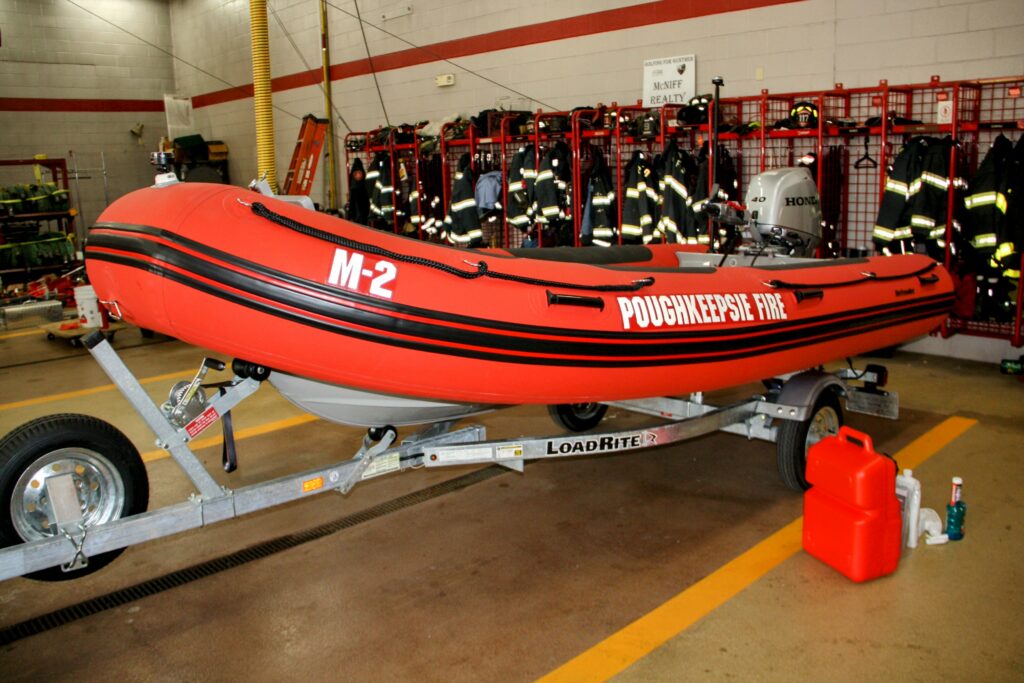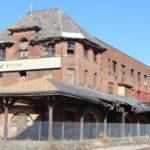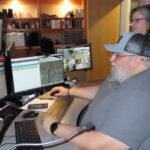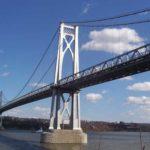POUGHKEEPSIE – The Poughkeepsie Fire Department, using one of their rescue boats, assisted by a civilian boat pulled several high school students from the Hudson River on Tuesday evening after their rowing shells began taking on water. The rescue operation occurred at approximately 7:25 p.m., according to Poughkeepsie Deputy Fire Chief Vincent Parise.
Several local high school crew teams were practicing on the river Tuesday in the vicinity of the Hudson River Rowing Association Boat House near Marist College, with clear skies, calm water, and no winds. Within minutes, Parise said, the water became very choppy and the boats started taking on water. The teams kept rowing until the boats were nearly sinking, creating an emergency situation, with as many as 18 rowers ending up in the river.
Parise told Mid-Hudson News that Poughkeepsie firefighters aboard their newest rescue vessel, Marine 2, were able to collect all of the students from the water and return them to the boat house dock where ambulance personnel and coaches were ready to treat the rowers for exposure and assess them for injuries, none of which were reported.
One student told Mid-Hudson News that all of the students were carrying their unprotected cell phones and some clothing aboard the rowing shells and all were lost to the depths of the river.
A social media post from an individual involved with the crew teams on Wednesday said, “While we do base practice around the weather and water conditions, there are times where nature can be unpredictable.” The post also said, “Last night there was a sudden microburst during practice that changed conditions and the flat water became turbulent in a matter of second. All coaches at the boathouse assisted in making sure that rowers from all teams were safe and secure after being removed from the boats.”
There are three types of Microbursts, according to the National Weather Service; wet, dry, and hybrid. “Cooling beneath the thunderstorm cloud base and sublimation are the primary forcing mechanisms with dry microbursts. Dry microbursts typically occur with very little precipitation at the surface or aloft, hence the dry type. Wet microbursts, on the other hand, are primarily driven by the entrainment of mid-level dry air and precipitation loading. Hybrid microbursts possess characteristics of both wet and dry microbursts. They are forced in the mid-levels by dry air entrainment and/or precipitation loading and in the low levels by cooling beneath the cloud base and/or sublimation.”








